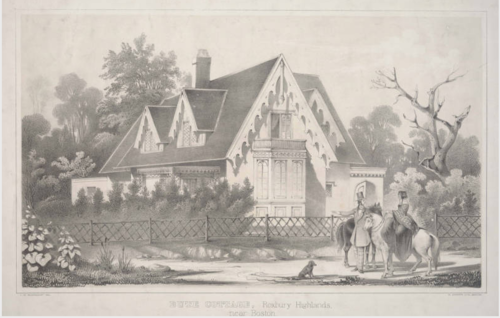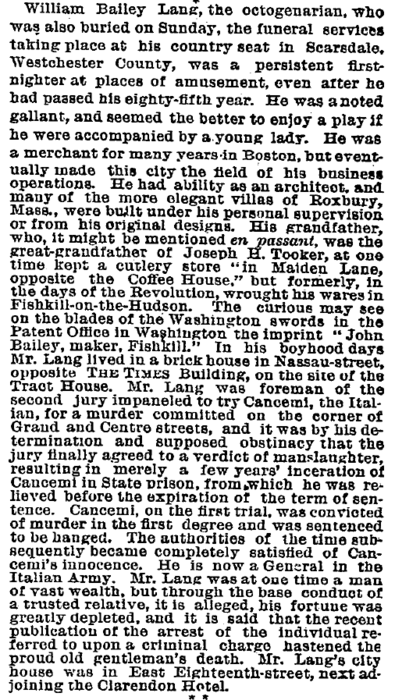As I’ve been searching for clues to the history of the ‘hood, I keep running across variations of a brief 44-page book called Views: with ground plans of the Highland cottages at Roxbury (near Boston). It was written by one William Bailey Lang and contains a handful of “cottages” (actually fairly good-sized single family homes) that Mr. Lang built around our neighborhood between 1837 and 1845.
Here’s the Bute Cottage, where he may have lived for a time. Below it is the 30’ high observatory in the woods at Bute Cottage. What, your cottage doesn’t have an observatory with views of “Boston, Cartridge, Charlestown, Chelsea, Dorchester, the Ocean, and the Hotel at Nahant?” There were also 4 outbuildings - a pumphouse, children’s playroom, carpenter’s shop, and a “rustic bower.”
Trying to find out more about Lang or his cottages has been a bit frustrating, but I have been able to dig up the basics of his life from the two obituaries reproduced below. In summary, he was a merchant who sold iron imported from England, first in Boston until about the 1840s and then in New York. He was also an amateur architect who designed not only these cottages but also a magnificent house in Scarsdale, NY, that is today home to the Scarsdale Women’s Society.
But what about the cottages? So far, I haven’t been able to find a map with owner’s names any earlier than 1873, decades after he left the area, and in my walks around Fort Hill I haven’t been able to positively ID any buildings that might be one of his. Most likely they are all long since destroyed, but if you happen to know of a cottage that might be one of his and is still standing, or if you know where any of them were, please get in touch!
Apologies that these are rotated 90 degrees. It’s how they appear in Google Books and it’s much easier to paste them this way directly from Google than it is to do screengrabs, editing, and relinking.
Obituary 1:
Click through to get to the original where you can enlarge it.
Obituary 2:
Click through for the PDF version from the NY Times, August 1, 1887.

